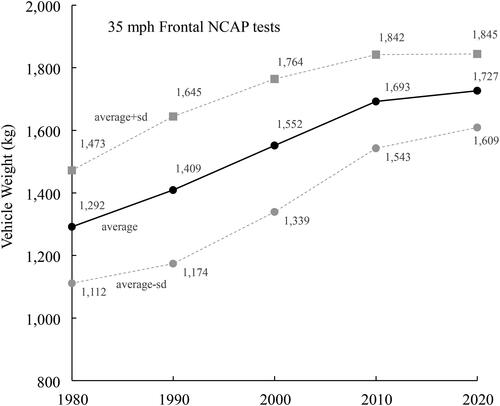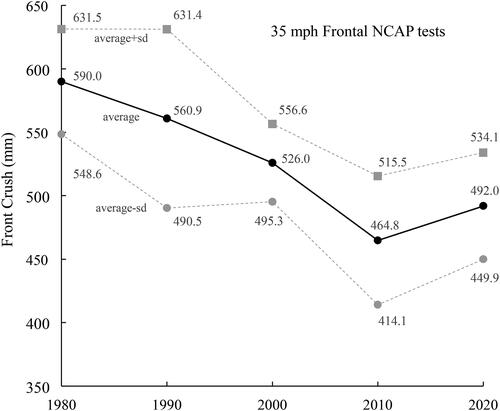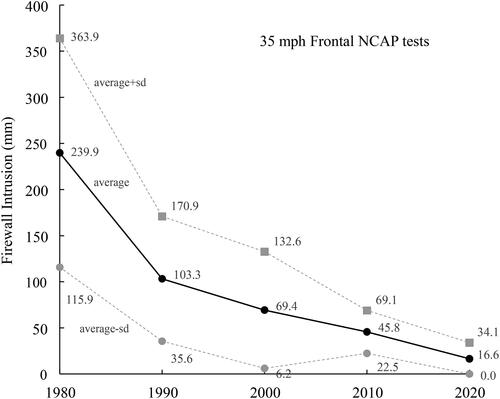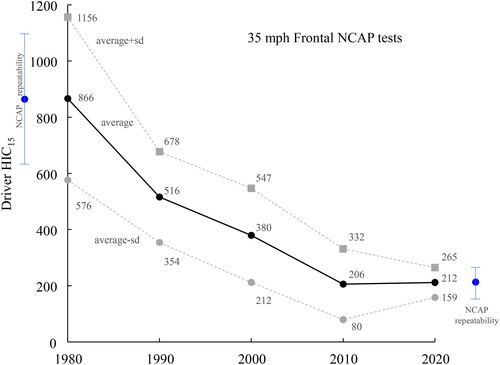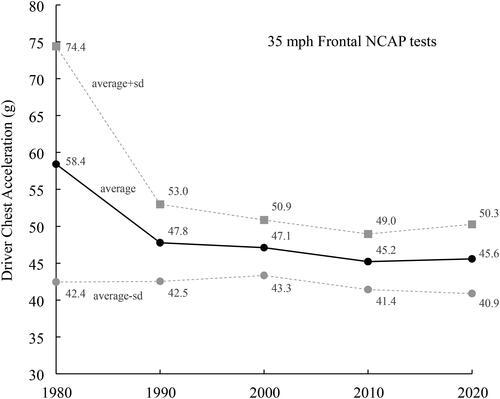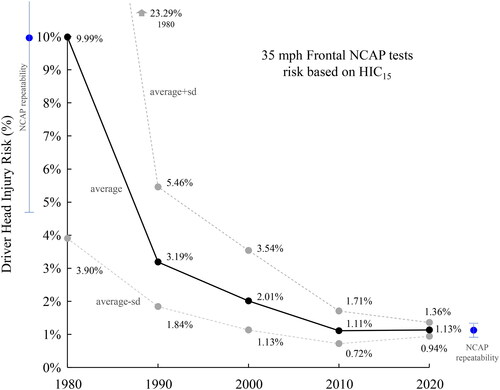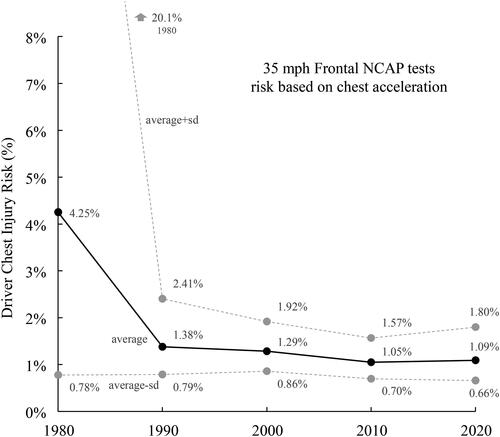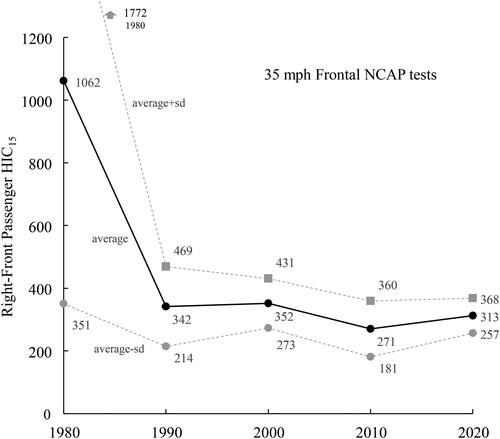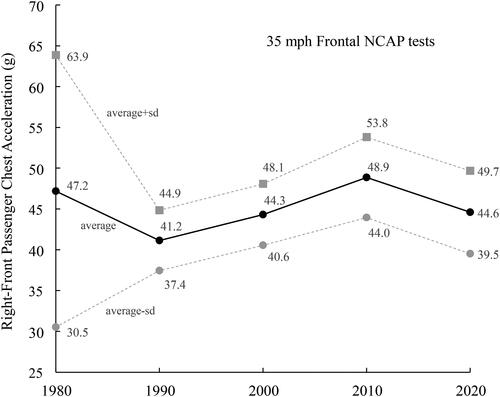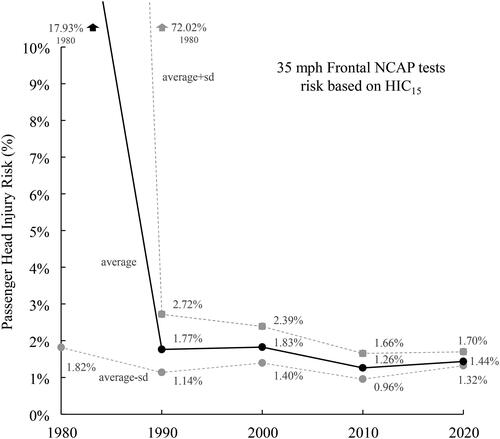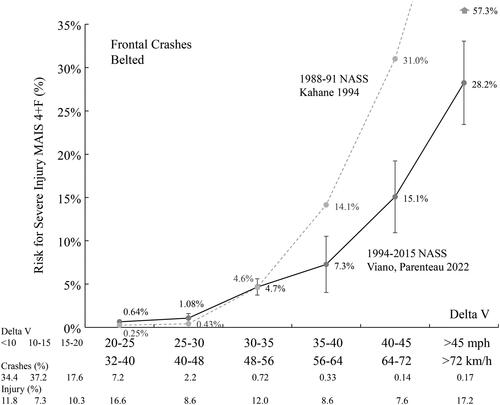Figures & data
Table 1. Percent reduction in dummy responses by decade since the 1980 NCAP baseline.
Figure 3. Vehicle dynamics in NCAP tests with eight generations of Nissan Maxima and the early Datsun 210.
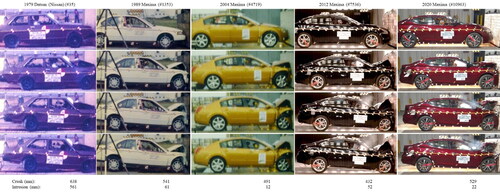
Table 2. 1994–2015 NASS field data for frontal crashes with belted use and adjustment to 1988–1991 NASS data from Kahane (Citation1994).
Figure 12. Passenger chest injury risk based on chest acceleration by decade for selected NCAP tests.
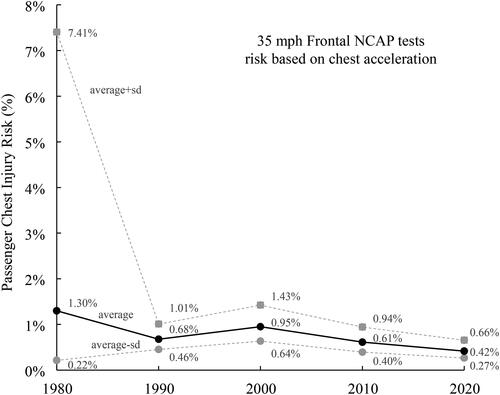
Figure 14. Frequency of frontal crash exposure and severe injury (MAIS 4 + F) with injury risk and se and equivalent HIC15.
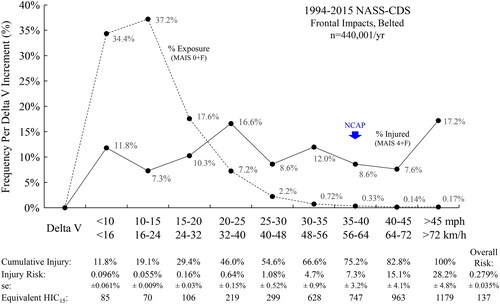
Figure 15. Risk for serious injury (MAIS 3 + F) in belted and unbelted drivers (top) and passengers (bottom) by vehicle MY.
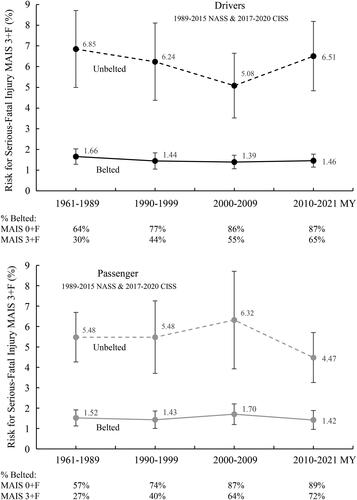
Supplemental Material
Download Zip (117.6 KB)Data availability statement
The crash test movies, data and reports are available from the NHTSA website (https://www.nhtsa.gov/research-data/research-testing-databases#/) using the test number (#) as a guide. Additional information on the data analysis can be requested of the author at [email protected].

